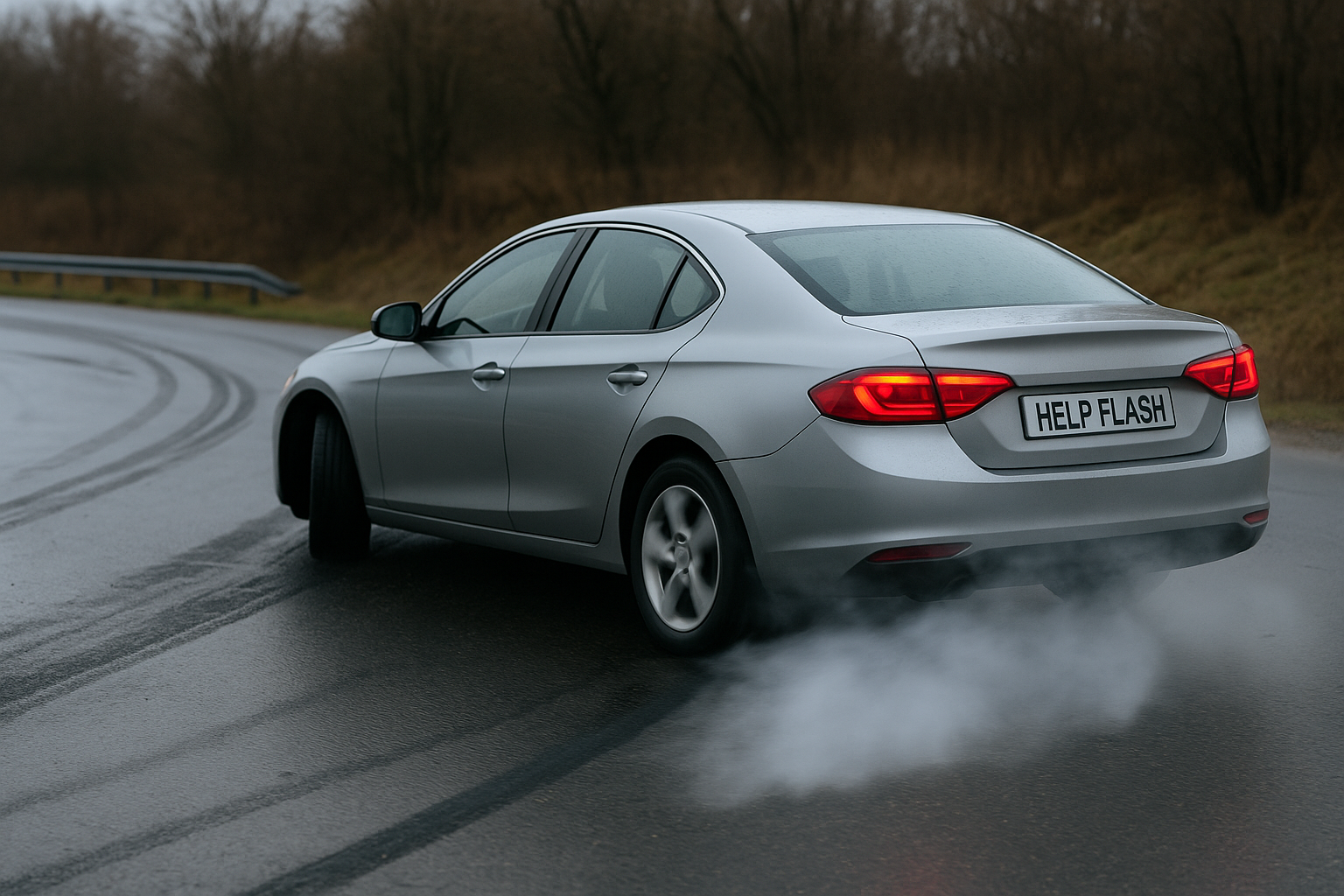What causes a vehicle to skid on the rear wheels?
Rear wheel skidding usually occurs when we lose grip in a corner or on slippery surfaces, such as wet asphalt, ice, or gravel. It can also occur when accelerating abruptly or taking a corner at a speed greater than appropriate. In these cases, the rear of the car tends to move sideways, causing what is known as oversteer .
Inadequate tire pressure, poor road surface condition, or even improper load distribution can also increase the risk of this type of skid.
How should we act if our vehicle skids?
When your car starts to slide from behind, the worst thing you can do is brake sharply or steer backward on instinct . If a car skids, you should brake only if necessary and always very gently, but there are other priorities.
So, if you're wondering how we'll react if our vehicle skids, the correct answer includes three keys: stay calm, act smoothly, and anticipate the car's movement to accompany it, not force it.
How to handle rear wheel skidding: key steps
The goal is to regain traction without compromising the vehicle's stability. Here's a step-by-step guide:
Stay calm and do not brake suddenly
In a rear-end skid, braking suddenly can cause the wheels to lock and the car to spin out of control. The first thing is to stay calm. Ease off the accelerator gradually and focus on keeping the steering wheel steady.
Turn the steering wheel in the direction of the skid
It may sound contradictory, but if the rear of the car pulls to the right, you should turn the steering wheel to the right. This movement accompanies the skid and helps align the vehicle with the direction of travel. Don't make sharp turns; your movements should be smooth and precise.
Regain control gradually
Once the car starts to respond, slowly ease the steering wheel back in and assess whether you can continue safely. If you have electronic aids like ESC (stability control), the system may correct some of the skid on its own, but you shouldn't rely solely on the technology.
What to do if the skid is severe or uncontrollable?
If the skid is so severe that you can't stabilize the car, prioritize your safety. Try to reduce your speed without locking the wheels and steer the vehicle to a safe area off the road if possible.
Remember that, in emergency situations, every second counts . That's why carrying a connected V16 beacon like the Help Flash IoT can make all the difference if you have to stop after a skid. You don't need to walk on the shoulder to place it, like with triangles, and it also activates the warning light at the exact location of the incident while you connect with the DGT (Directorate General of Traffic).
Knowing how to react when your rear wheels skid isn't just a matter of reflexes, but also of knowing what to do in the critical moment. Practice these maneuvers in safe areas if you have the opportunity, keep your car in good condition, and have emergency aids, such as Help Flash. With prevention and preparation, you'll be better equipped to react safely.






